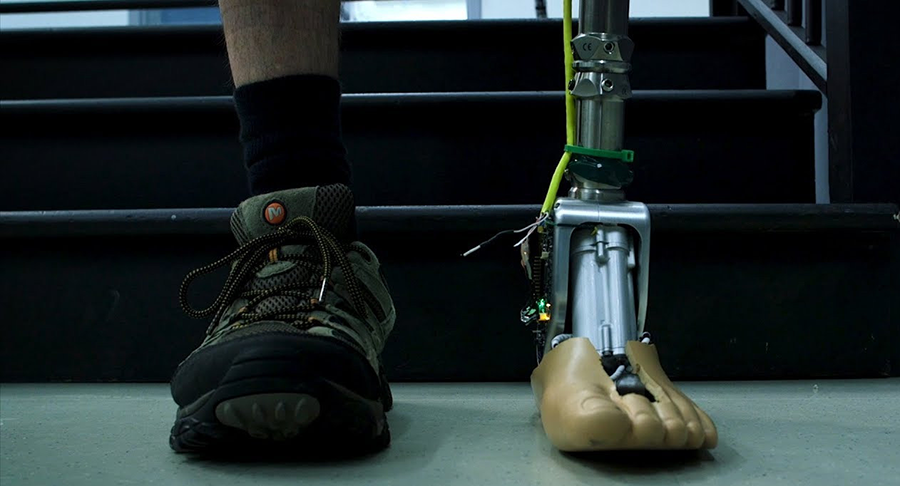While prosthetic limbs are getting better and more personalized, they are still a far cry from the real thing. The Vanderbilt University lab of Michael Goldfarb, PhD, has completed testing of a smart prosthetic ankle which is a little closer than others; it moves on its own, adapting to its user’s gait and the surface on which it lands.
The motor, actuator, sensors, and chips of the ankle work together to either conform to the surface the foot is contacting or remain stationary, depending on the user’s needs. The research team hopes to commercialize the ankle within about two years.
Read more Designing Exoskeletons to Interact with Humans
Dr. Goldfarb said the problem with finding workable prosthetic ankles is so pervasive that many amputees only wear one type of shoe – whichever one works best with their prosthetic.
“Our prosthetic ankle is intelligent, so you can wear a dress shoe, a running shoe, a flat—whatever you’d like—and the ankle adapts,” said Michael Goldfarb, the H. Fort Flowers Professor of Mechanical Engineering; professor of electrical engineering and physical medicine and rehabilitation; and co-director of the Center for Rehabilitation Engineering and Assistive Technology at Vanderbilt. “You can walk up slopes, down slopes, up stairs and down stairs, and the device figures out what you’re doing and functions the way it should,” said Goldfarb who’s perhaps best known for working on a bionic leg with shark attack victim Craig Hutto and later developing the world’s first easily portable, wearable robot – the Indego exoskeleton.
Mike Sasser, who has a transtibial amputation, said he tried hydraulic ankles without any sort of microprocessors, and he found those to be clunky, heavy, and unforgiving for an active person. Sasser tested the new device over several years at Goldfarb’s engineering laboratory. “This isn’t that. It actually lifts the toe for you,” he said.
Harrison Bartlett is a Ph.D. student in Goldfarb’s lab. Bartlett works with Sasser to gather feedback from the sensors and make adjustments based on both the data and Sasser’s user experience.
Bartlett was a participant in the National Science Foundation’s I-Corps program for budding entrepreneurs. There he had a chance to interview nearly 100 potential users of the ankle to understand what would make the device a success.
Read more Industrial Exoskeletons Are Here With More to Follow
“I talked to one person whose favorite restaurant was at the top of a long flight of stairs, so they haven’t eaten there in 10 years,” he said. “Another sat on benches throughout an amusement park while their family enjoyed the rides because they couldn’t be sure about navigating that with their prosthetic. We want to return people to any of the life activities they want to do.”













